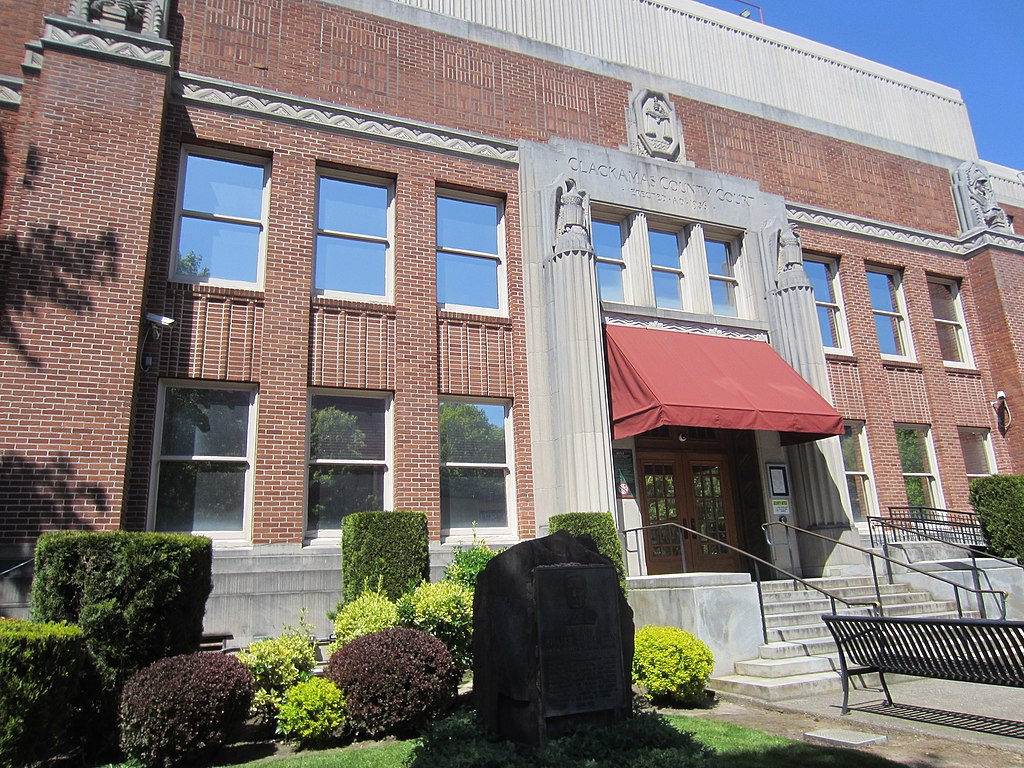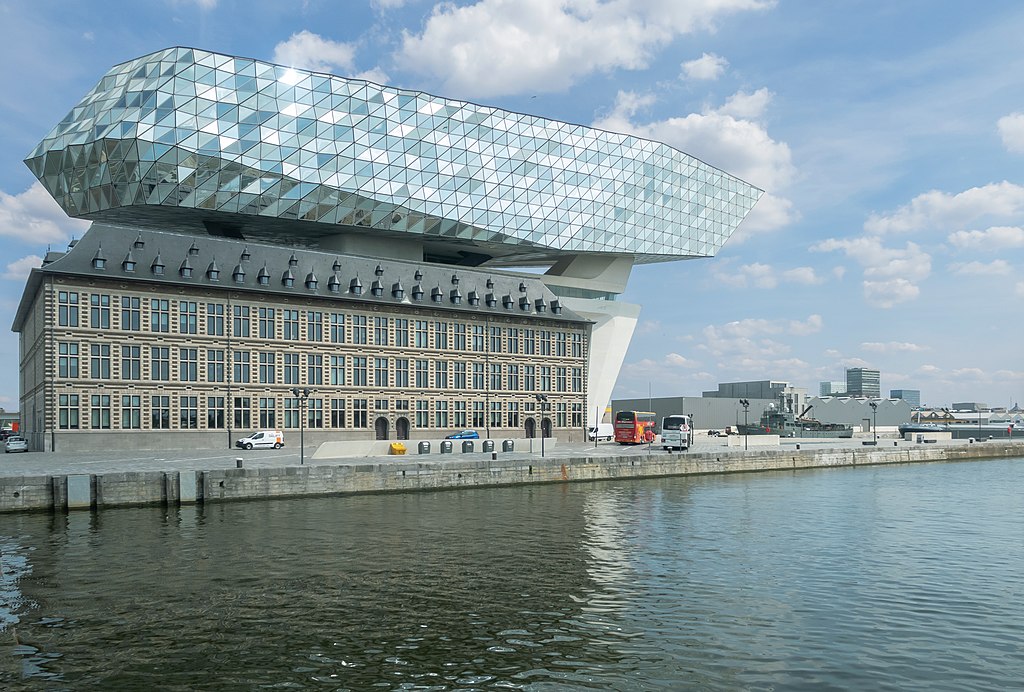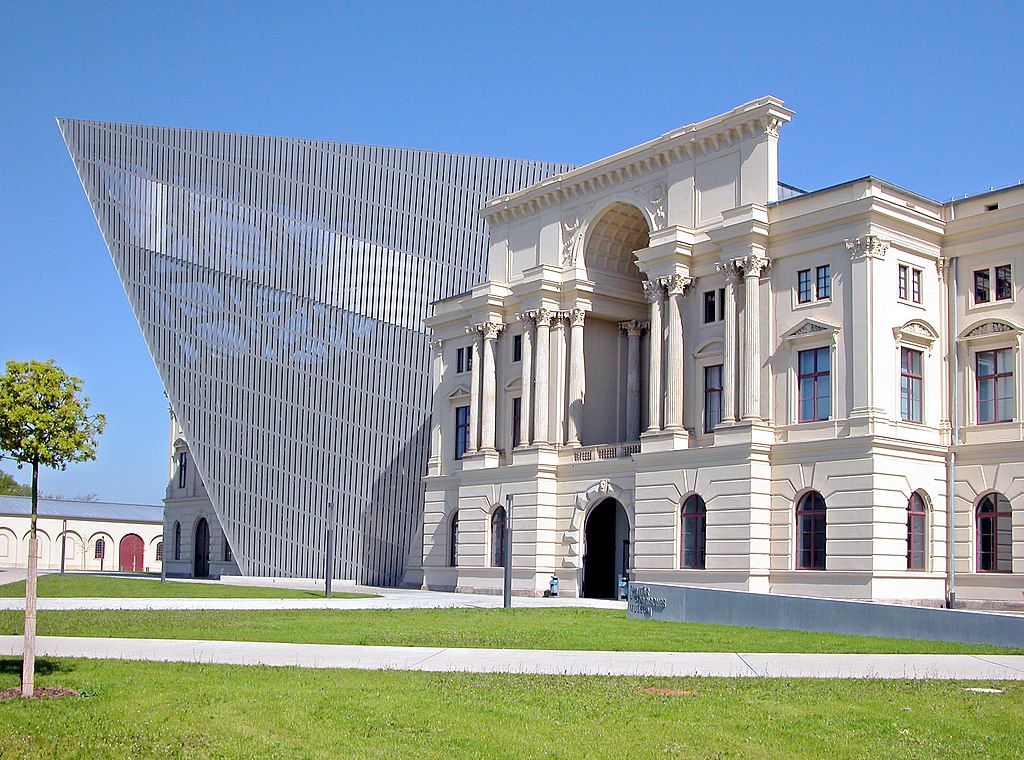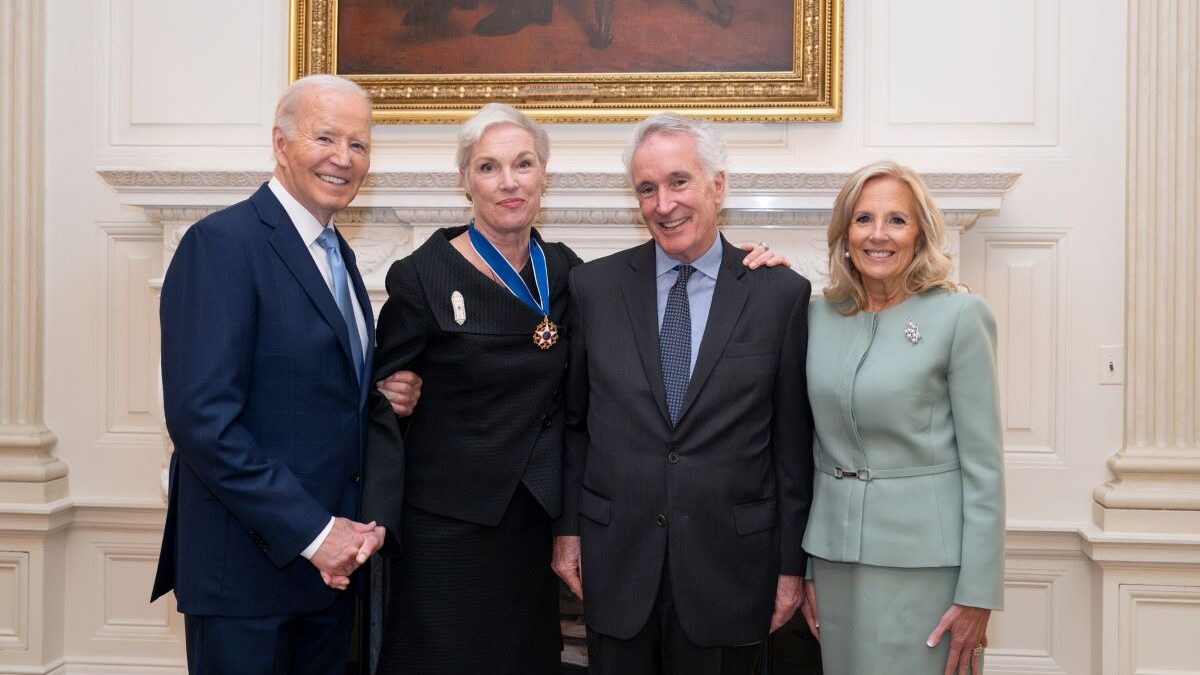The Clackamas County Courthouse in my hometown of Oregon City, Oregon, carries a historical legacy. But modern architects are planning to ruin that.
The red brick building was built in 1936, less than 100 years after settlers founded the town at the end of the Oregon Trail. Scales of justice sit on a facade above the entrance, flanked by two stone columns capped with bald eagles. Beside the building lies Liberty Plaza, which lines the town’s historic main street.

But the county has since outgrown its courthouse. The building first served nearly 57,000 residents, according to the 1940 census. During the 2020 census, however, the building tried to serve more than 420,000 residents. Residents needed a new courthouse, but instead of continuing the original building’s legacy, officials pursued modern architecture.
The proposed courthouse looks like a prison. Or an industrial park. Or anything, really. The county plans to build a six-story behemoth in a new location that will feature vertical lines of windows, separated by offset stretches of brick. Utility boxes and solar panels will pollute its roof. Its grounds will host modern art and pointlessly geometric walkways. Given a few years of aging, the new courthouse will no longer remind locals of their past, but of Soviet-era apartments.
Classical architecture descends from the Greek and Roman traditions, using techniques such as columns, arches, and light to portray natural beauty, order, and harmony. Former President Donald Trump issued an executive order in 2020 to give classicism preference in any new federal buildings, citing the nation’s founders.
“They sought to use classical architecture to visually connect our contemporary Republic with the antecedents of democracy in classical antiquity, reminding citizens not only of their rights but also their responsibilities in maintaining and perpetuating its institutions,” the order reads.
This brought condemnation from the world of modern architecture, which rejects classicism in favor of experimentation and free expression. President Joe Biden rescinded the order on Feb. 24, 2021. But in rejecting these rules, modern culture also rejects classicism’s inherent beauty.
The Antwerp Port Authority in Belgium was a beautiful, Gothic, tan brick building. The Hanseatic League, a medieval guild, used it as a meeting house, and it later became a fire station. It was still in good condition and offered ample lighting.
But when officials needed a new building for the port authority, modern architects made an addition: a giant glass lump, completed in 2016. This object dwarfs the historic building, sitting askew on its roof on a concrete stilt for support. The glass lump — fittingly — contains bureaucratic offices and fluorescent lights.

The Military History Museum in Dresden, Germany, found itself in a similar situation. The building was built in 1876 as an armory, and through the years it has served as a museum for the Saxon Army, Nazis, Soviets, and East Germans. The original building looks like a more European version of the White House, with a triumphal arch and balcony above its entryway.
Modern architects still couldn’t resist ruining a good thing. They stuck a large hunk of metal, resembling a meat cleaver, into the building’s side in 2011. The building’s exterior otherwise escaped mutilation, but its interior was not so lucky. Tilted, triangular walls of concrete separate rooms at random points. Hallways run in every direction, and visitors use poorly built wooden stairways to reach different floors. One can easily get lost inside the metal Dorito, with no means of escape but through a series of diagonal doors. This may be original, but it is certainly not beautiful.

While well-known and loved by many, the Guggenheim Museum in New York City depicts modern architecture run amok.
This lopsided building, easily mistaken for a parking garage, features incoherent lines leading to a top-heavy spiral staircase that expands as it leads visitors to the top. Overseeing it all sits the “oculus,” a circular skylight that makes the space look like a shopping mall. This is a microcosm of modern art: In its attempts to be symbolic, simplistic, and abstract, it appears cheap.

Modern architecture follows suit. It finds its value in human achievement and perception, but nothing more. Modern buildings quickly fall from popularity — and into disrepair — because of their utopian, unnatural design.
Classical structures like the Pantheon, however, have existed for nearly 1,900 years and offer more beauty than anything mentioned before. The Pantheon, built in the early-120s A.D., went from a Roman temple to a Christian church and is the burial site for several Renaissance figures and monarchs. It has featured the largest dome in the world for 1,300 years. At the top of this dome lies an oculus, but unlike that of the Guggenheim, this oculus highlights the building’s intricate detail.

The Pantheon’s enduring beauty comes from hundreds of years of Western classicism, which offered columns, pillars, and arches to help support the large dome. These elements depict the rules of harmony, order, and continuity that modern architecture defies.
Sometimes, rules are good. A hunk of glass does not belong on the roof, a giant metal spike does not belong on the side of a building, and a parking garage is not a museum. An ugly box cannot carry a town’s legacy.








